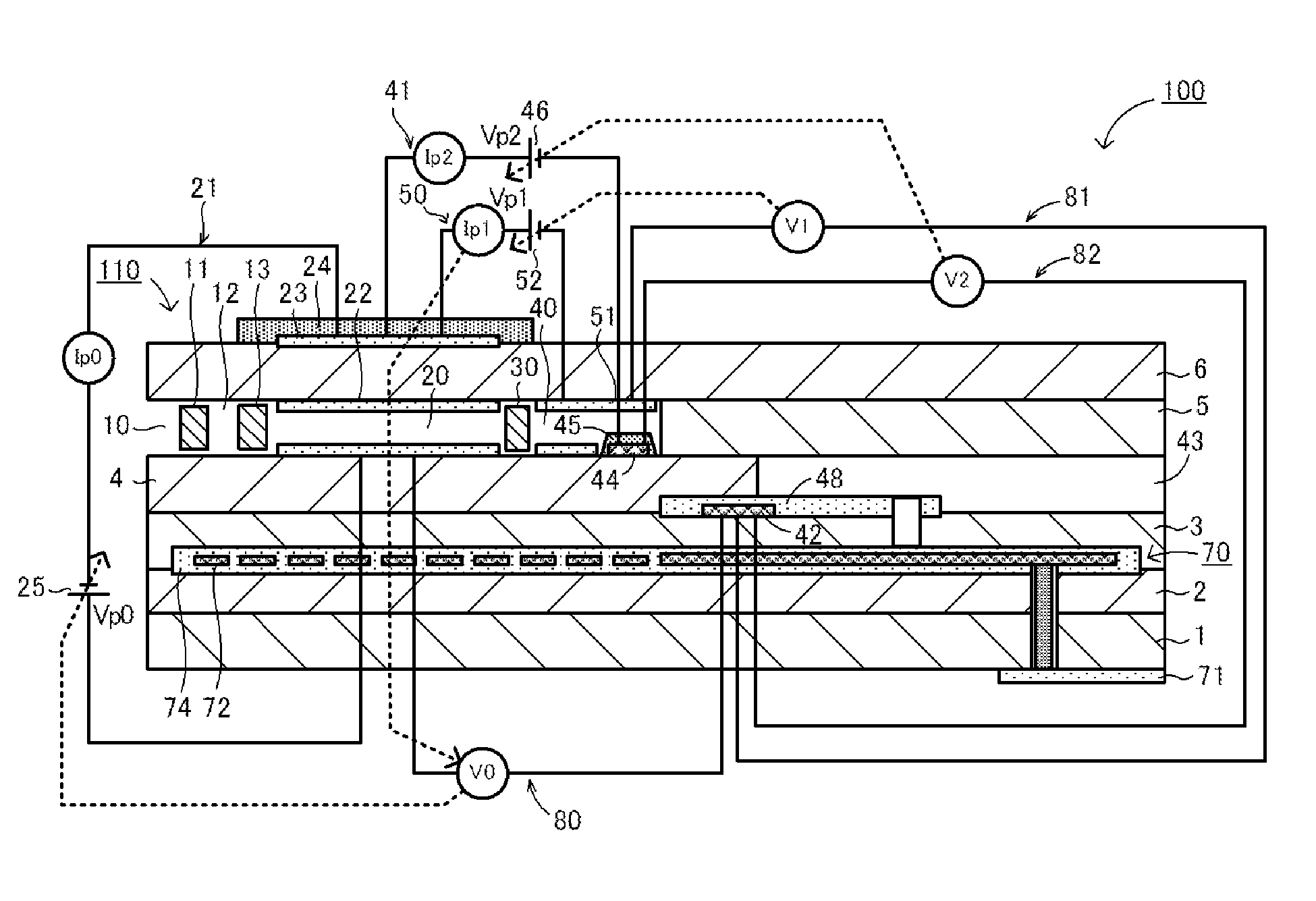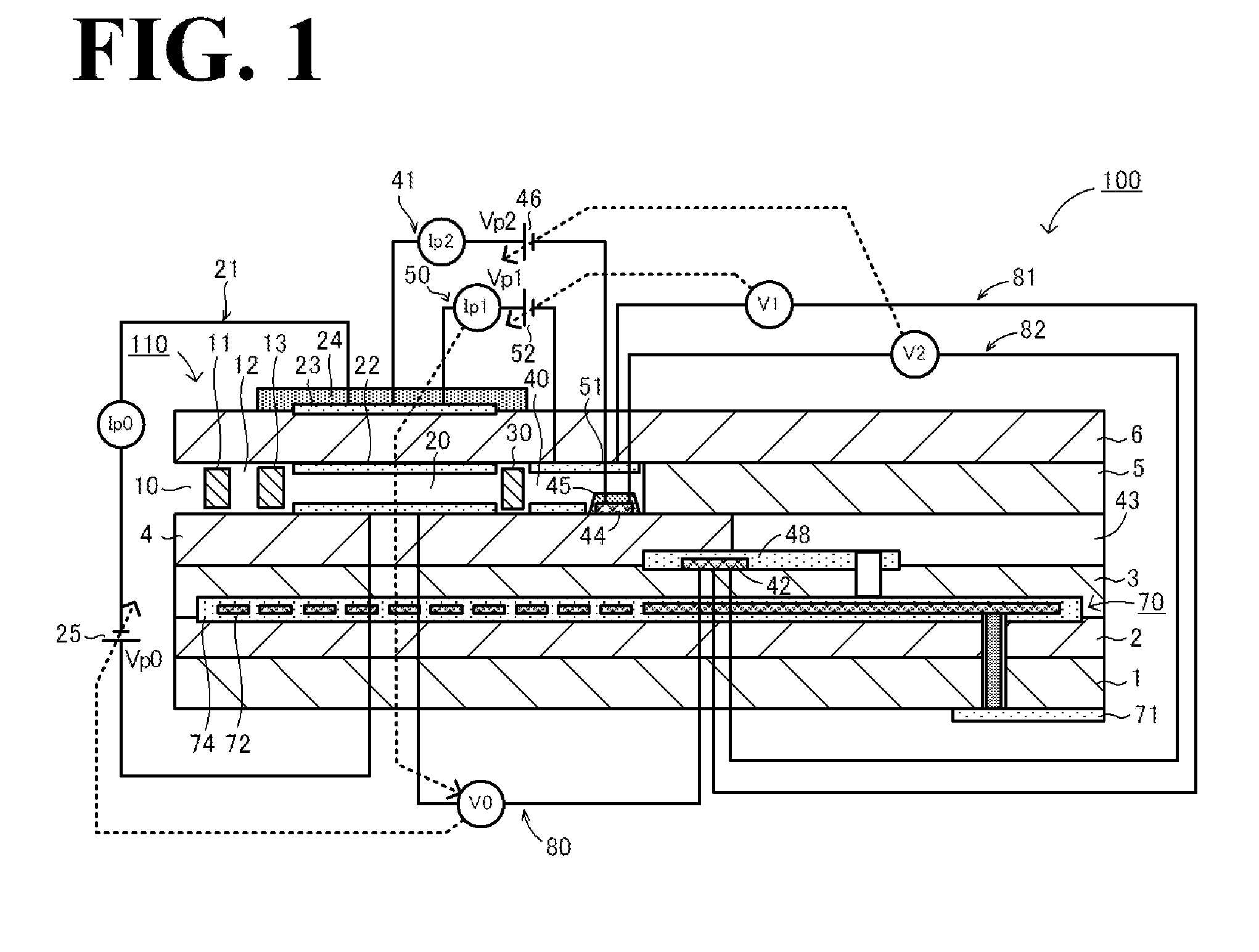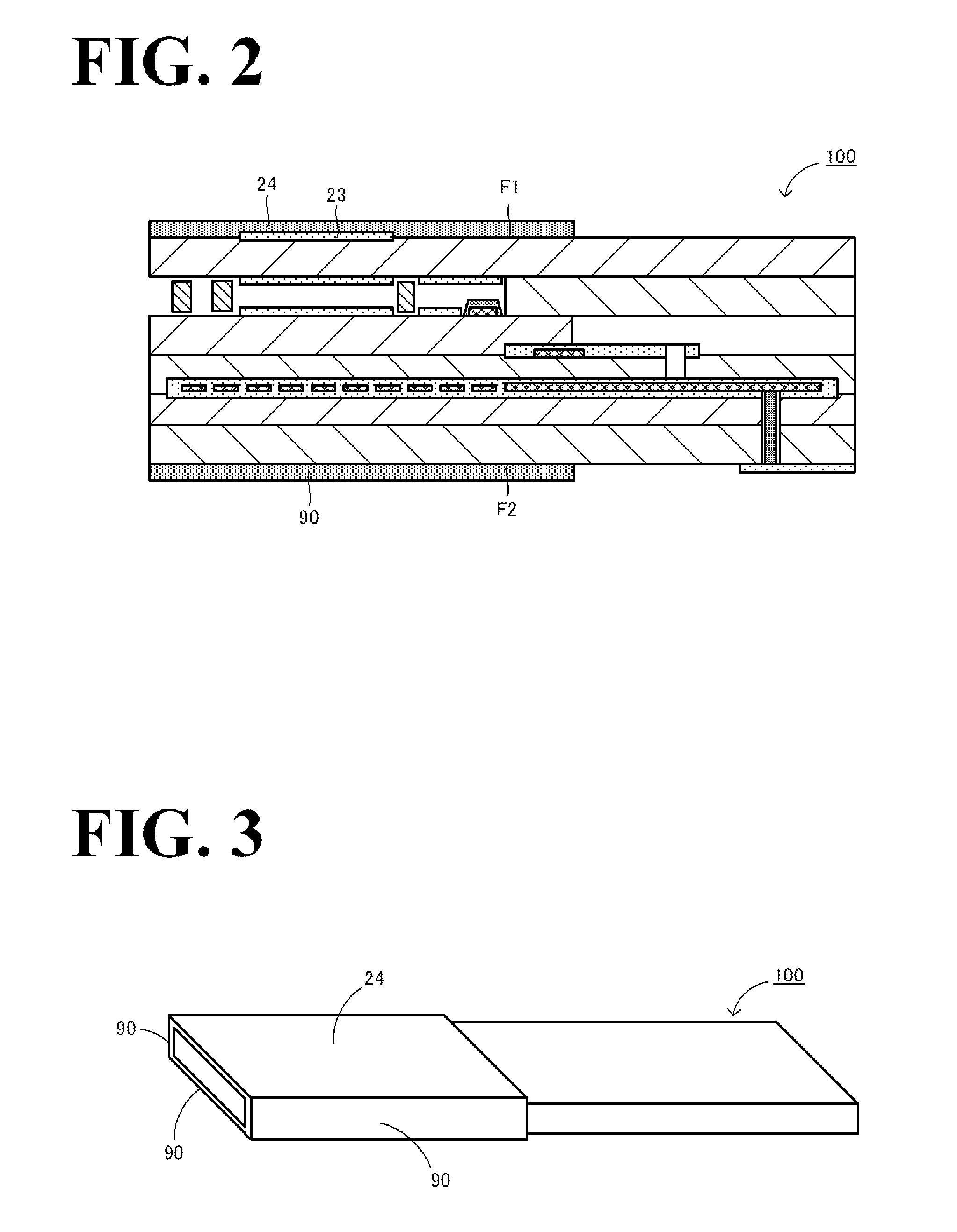Gas sensor and method for manufacturing same
a technology of gas sensor and manufacturing method, which is applied in the field of gas sensor, can solve the problems of increasing the impedance between the inner and outer pump electrodes, reducing the measurement accuracy, and the technique of simply covering the outer pump electrodes with porous protective layers, and achieves the effects of preventing light-off time, high measurement accuracy, and small thermal capacity
- Summary
- Abstract
- Description
- Claims
- Application Information
AI Technical Summary
Benefits of technology
Problems solved by technology
Method used
Image
Examples
examples 1 to 12
[0066]The NOx sensors 100 of Examples 1 to 9 were manufactured according to the following basic procedures. First, six green sheets were fabricated by shaping a zirconia powder, added with 4 mol % of yttria as a stabilizer, into the form of a tape. Then, patterns for the electrodes, the insulation layers, the resistance heating elements, etc. were formed by screen printing on the six green sheets corresponding respectively to the first substrate layer 1, the second substrate layer 2, the third substrate layer 3, the first solid electrolyte layer 4, the spacer layer 5, and the second solid electrolyte layer 6 of the NOx sensor 100. Thereafter, those sheets were stacked and integrated to form a laminate. The laminate was cut into pieces each corresponding to the size of one NOx sensor 100. A portion of the upper surface of each of the cut laminates, the portion operating as the outer pump electrode 23, was exposed to the outside. The predetermined slurry was screen-printed to cover th...
examples 13 to 17
[0072]In the Examples 13 to 17, before firing the laminate, the characteristic stabilizing layers 24 were each formed by the screen printing method in accordance with the above-described basic procedures such that the thickness of the characteristic stabilizing layer 24 has an average value of 50 μm. On that occasion, the number of repeated printings, the viscosity of the slurry, etc. were adjusted as appropriate to form the characteristic stabilizing layers 24 with thickness variations of 5%, 10% and 20%. On the laminate after the firing, it was likewise tried to form the characteristic stabilizing layers with thickness variations of 5%, 10% and 20%. However, the thickness variation of less than 30% was not obtained. In other words, only the characteristic stabilizing layers with thickness variations of 30% or more were obtained even when the number of repeated printings, the viscosity of the slurry, etc. were adjusted. The reason presumably resides in that the printed surface is n...
PUM
| Property | Measurement | Unit |
|---|---|---|
| thickness | aaaaa | aaaaa |
| thickness | aaaaa | aaaaa |
| porosity | aaaaa | aaaaa |
Abstract
Description
Claims
Application Information
 Login to View More
Login to View More - R&D
- Intellectual Property
- Life Sciences
- Materials
- Tech Scout
- Unparalleled Data Quality
- Higher Quality Content
- 60% Fewer Hallucinations
Browse by: Latest US Patents, China's latest patents, Technical Efficacy Thesaurus, Application Domain, Technology Topic, Popular Technical Reports.
© 2025 PatSnap. All rights reserved.Legal|Privacy policy|Modern Slavery Act Transparency Statement|Sitemap|About US| Contact US: help@patsnap.com



